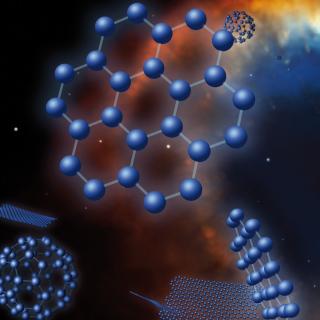Bibcode
Crawford, Courtney L.; Tisserand, Patrick; Clayton, Geoffrey C.; Soon, Jamie; Bessell, Mike; Wood, Peter; García-Hernández, D. A.; Ruiter, Ashley J.; Seitenzahl, Ivo R.
Bibliographical reference
Monthly Notices of the Royal Astronomical Society
Advertised on:
5
2023
Citations
14
Refereed citations
13
Description
Stellar spectral classification has been highly useful in the study of stars. While there is a currently accepted spectral classification system for carbon stars, the subset of hydrogen-deficient carbon (HdC) stars has not been well described by such a system, due predominantly to their rarity and their variability. Here we present the first system for the classification of HdCs based on their spectra, which is made wholly on their observable appearance. We use a combination of dimensionality reduction and clustering algorithms with human classification to create such a system with eight total classes corresponding to temperature, and an additional second axis corresponding to the carbon molecular band strength. We classify over half of the known sample of HdC stars using this, and roughly calibrate the temperatures of each class using their colours. Additionally, we express trends in the occurrence of certain spectral peculiarities such as the presence of hydrogen and lithium lines. We also present three previously unpublished spectra, report the discovery of two new Galactic dustless HdC stars, and additionally discuss one especially unique star that appears to border between the hottest HdCs and the coolest extreme helium stars.
Related projects

Nucleosynthesis and molecular processes in the late stages of Stellar Evolution
Low- to intermediate-mass (M < 8 solar masses, Ms) stars represent the majority of stars in the Cosmos. They finish their lives on the Asymptotic Giant Branch (AGB) - just before they form planetary nebulae (PNe) - where they experience complex nucleosynthetic and molecular processes. AGB stars are important contributors to the enrichment of the
Domingo Aníbal
García Hernández